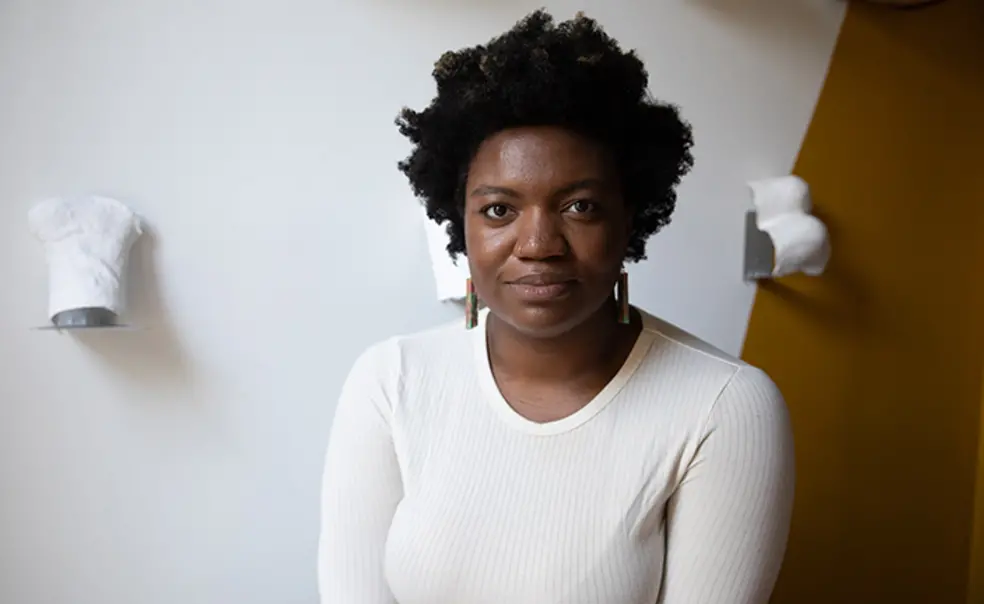Ogemdi Ude ’16 Turns Grief Into Joy Through Dance
After a dance career of fits and starts, Ude’s choreography is taking off
Ogemdi Ude ’16 often joked with a friend that she would one day make Dance Magazine’s famed list of young dancers poised for a breakthrough, but she says she never actually expected it. Then she got a call from the editor telling Ude they wanted her on the cover. In January — with one leg raised and her head cocked, a smile on her face — she stood out behind the headline: “25 To Watch.”
“It feels really cool that other people are interested in the way that I work,” Ude says, “and I feel really grateful that I kept doing this thing that I felt like sometimes people were telling me not to do.”
Ude’s dance career has had many fits and starts. She took her first ballet class at age 4 at her mother’s urging, but didn’t like it and stopped. Later she changed her mind and joined her middle school’s dance team, which included majorette dancing. When she then initially failed to make the dance team in high school, Ude took dance classes until she made that team.
When Ude arrived at Princeton, she auditioned for all of the big dance companies and got callbacks a few times, but she never made the final cut. Instead, she devoted herself to the dance and theater departments.
“I kind of just tried to just maximize all that I could do with the department,” Ude says. It turned out to be a blessing in disguise since department work helped Ude find the kind of dancing she actually liked, rather than the kinds she thought she was supposed to like. “The department can be quite open-ended, and so I just took a little bit more time to explore.”
A pivotal moment for Ude happened in the fall of her senior year, when she went to see a solo performance by the acclaimed dancer Bill T. Jones. She remembers sitting in the lobby afterward, almost mourning the end of her dance career, thinking that she wasn’t “allowed” to have a career as a dancer due to her previous audition rejections. Her professor, Stuart Singer, pushed back on that idea and encouraged Ude to find her own path.
That path has led to Dance Magazine calling Ude’s work “prolific” and “genre-bending.” Reflecting on the honor, she says: “I think we have moments in our life where we feel really affirmed that all of the decisions that we made that might feel very worrisome at the time have led us to something that feels really good and that feels really right.”
Ude’s choreography deals with death and grief, a theme that’s carried over from her senior thesis on death in Black performance art. She says that an essential part of her work is telling the stories of people she has lost and showing how they are a part of her. She pushes past the idea that grief is just simply sad.
“I want there to be parts that are engaging people from a range of emotions,” Ude says. “Also, just talking about the people we lost, that we loved, is really joyful. Knowing and loving this person wasn’t sad, it was incredibly joyful and I want to share that.”
Dance Magazine noted that the next two years for Ude will include commissions and residencies at Abrons Arts Center, Gibney, Danspace Project, The Watermill Center, and BRIC, among others. Ude’s full schedule can be found on her website, www.ogemdiude.com.












No responses yet